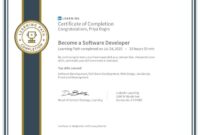Staging pain why you shouldnt skip it – Staging Pain: Why You Shouldn’t Skip It – We’ve all been there, staring at a deadline, tempted to skip the staging process and push our code directly to production. But, trust me, that’s a recipe for disaster. Staging is your safety net, your chance to catch errors before they reach your users.
It’s the difference between a smooth launch and a nightmarish production crisis.
Think of it like a dress rehearsal. You wouldn’t debut a new play without a practice run, right? The same logic applies to your code. Staging allows you to test your changes, identify potential issues, and ensure your code works flawlessly in a real-world environment.
It’s a vital step that can save you time, frustration, and headaches in the long run.
The Importance of Staging

Staging is an essential step in the software development lifecycle that involves creating a testing environment that closely mirrors the production environment. This environment allows developers to test their code changes in a controlled setting before deploying them to production, minimizing the risk of introducing bugs or disrupting live services.
Benefits of Staging, Staging pain why you shouldnt skip it
Staging provides several key benefits that contribute to a smoother and more reliable software development process.
- Reduced Risk of Production Errors: By testing in a staging environment, developers can identify and fix potential issues before they impact users. This reduces the risk of production errors that can lead to downtime, data loss, and customer dissatisfaction.
- Improved Code Quality through Testing: Staging allows developers to thoroughly test their code changes in a realistic environment, ensuring that the code meets the required functionality and performance standards. This leads to improved code quality and a more stable application.
- Easier Collaboration and Communication: Staging facilitates better collaboration and communication between developers, testers, and other stakeholders. By providing a shared testing environment, everyone involved can easily track progress, identify potential issues, and work together to resolve them.
- Enhanced Security Measures: Staging environments can be used to implement security measures and test for vulnerabilities before deploying the application to production. This helps to mitigate security risks and protect sensitive data.
Real-World Examples of Staging Preventing Production Issues
Staging has proven to be a valuable practice in preventing major issues in production. Here are some real-world examples:
“During the development of a new e-commerce platform, our team used a staging environment to test all the new features and functionalities before deploying them to production. This allowed us to identify and fix a critical bug that would have caused major problems for our customers if it had been deployed to production. The staging environment saved us from a potential disaster.”
“A major social media company used staging to test a new algorithm that was designed to improve user engagement. By testing the algorithm in staging, they were able to identify a potential issue that could have resulted in a significant decrease in user engagement. The issue was resolved in staging, preventing any negative impact on the production environment.”
Common Mistakes When Skipping Staging: Staging Pain Why You Shouldnt Skip It
Skipping staging might seem like a shortcut, but it often leads to unforeseen problems and delays in your development workflow. It’s tempting to deploy directly to production, especially when working on smaller projects or under tight deadlines. However, this can result in significant consequences that can negatively impact your users and your business.
Here are some common mistakes developers make when skipping staging and the potential consequences:
Unexpected Production Errors
Skipping staging means you’re essentially testing your code in a live environment. This increases the likelihood of unexpected errors occurring in production. Without a staging environment to catch these errors before they reach users, they can cause disruptions and negatively impact user experience.For example, imagine a developer deploys a new feature to production without testing it thoroughly.
If the feature has a bug that crashes the application, users will experience downtime and frustration. This can lead to lost revenue and damage your brand reputation.
Data Loss or Corruption
Another significant risk of skipping staging is data loss or corruption. Without a staging environment, developers may inadvertently make changes to the production database that could lead to data loss or corruption. This can have devastating consequences, especially for businesses that rely heavily on data.For example, if a developer accidentally deletes a crucial table in the production database, it could result in losing valuable customer data, financial records, or other critical information.
Recovering from such data loss can be time-consuming and costly.
Security Vulnerabilities
Deploying code directly to production without testing it in a staging environment increases the risk of introducing security vulnerabilities. Without a secure staging environment to test for potential security flaws, your application could be exposed to attacks.For example, a developer might accidentally introduce a vulnerability that allows attackers to access sensitive user data.
This could result in data breaches, identity theft, and legal consequences.
Increased Downtime and Lost Productivity
Skipping staging can lead to increased downtime and lost productivity. When errors occur in production, developers need to fix them immediately, which can disrupt the workflow and cause delays.For example, if a production error occurs during peak hours, it can significantly impact user experience and lead to lost revenue.
Obtain direct knowledge about the efficiency of what does europes approach data privacy mean for gpt and dall e through case studies.
Developers may need to work overtime to fix the issue, which can be stressful and inefficient.
The Staging Process
Staging is the process of creating a replica of your production environment where you can test your code changes before deploying them to your live site. This is a crucial step in the software development lifecycle, as it allows you to catch errors and bugs before they impact your users.Staging is like a dress rehearsal for your website or application.
You can test all the features, functionality, and performance of your code in a controlled environment before releasing it to the public. This helps you avoid costly downtime and ensures a smooth and seamless user experience.
Setting Up a Staging Environment
Setting up a staging environment involves creating a copy of your production environment, including all the necessary software, databases, and configurations. The staging environment should be as close to your production environment as possible to ensure accurate testing.
- Choose a suitable platform:There are several platforms available for setting up staging environments, including cloud providers like AWS, Azure, and Google Cloud, and local development tools like Vagrant and Docker. The choice of platform depends on your specific needs and resources.
- Configure the environment:Once you have chosen a platform, you need to configure the staging environment to match your production environment. This includes setting up databases, installing necessary software, and configuring server settings.
- Deploy the code:After configuring the environment, you need to deploy your code to the staging server. This can be done using a variety of tools and methods, depending on your workflow.
Deploying Code to Staging
Deploying code to staging involves transferring the code from your development environment to the staging server. This process should be automated to ensure consistency and efficiency.
- Use a version control system:A version control system like Git helps you track changes to your code and allows you to easily deploy specific versions to staging. It also provides a history of changes, making it easier to revert to previous versions if needed.
- Automate the deployment process:Automating the deployment process using tools like Jenkins or Travis CI helps to reduce errors and ensures that the code is deployed consistently. Automation also saves time and effort, allowing you to focus on other tasks.
- Test the deployment:After deploying the code to staging, it’s important to test the deployment to ensure that the code is working as expected. This includes checking for errors, verifying functionality, and testing performance.
Performing Thorough Testing
Testing in the staging environment is crucial to identify and fix any issues before deploying to production. This includes functional testing, performance testing, security testing, and user acceptance testing.
- Functional testing:This involves testing the functionality of the application to ensure that all features are working as expected. It includes testing user workflows, data input and output, and API interactions.
- Performance testing:This involves testing the performance of the application under different load conditions. It includes testing response times, resource utilization, and scalability. This helps identify bottlenecks and optimize the application for optimal performance.
- Security testing:This involves testing the security of the application to identify vulnerabilities and ensure that it is protected from attacks. It includes testing for common vulnerabilities like SQL injection, cross-site scripting, and authentication issues.
- User acceptance testing (UAT):This involves testing the application by real users to gather feedback and ensure that the application meets their needs. It includes testing the user interface, usability, and overall user experience.
Gathering Feedback and Resolving Issues
Once the testing is complete, it’s important to gather feedback from stakeholders and resolve any issues identified during testing.
- Collect feedback:Gather feedback from developers, testers, and stakeholders to identify any areas for improvement. This feedback can be collected through formal reviews, informal discussions, or using bug tracking systems.
- Resolve issues:Address any issues identified during testing before deploying to production. This includes fixing bugs, addressing performance issues, and implementing security fixes.
- Retest after fixing issues:After resolving issues, it’s important to retest the application to ensure that the fixes have been implemented correctly and that the application is working as expected.
Promoting Changes to Production
Once all testing is complete and issues are resolved, you can promote the changes from staging to production.
- Backup production data:Before promoting changes to production, it’s important to back up production data to ensure that you can revert to a previous version if needed.
- Deploy the code:Deploy the code from staging to production using the same automated deployment process used for staging. This ensures consistency and reduces the risk of errors.
- Monitor the production environment:After deploying the code to production, it’s important to monitor the production environment to ensure that the application is running smoothly and that there are no unexpected issues.
Tools and Technologies for Staging
Staging is a crucial part of the software development process, and selecting the right tools and technologies is essential for efficient and effective staging environments. These tools and technologies provide a range of features and benefits that streamline the development workflow and help developers deliver high-quality software.
Tools and Technologies for Staging
Here’s a table outlining popular tools and technologies used for staging, along with their features, benefits, and use cases:
| Tool Name | Features | Benefits | Use Cases |
|---|---|---|---|
| Docker | Containerization, image building, container orchestration | Consistent environments, portability, resource optimization, faster deployment | Deploying applications in isolated environments, managing dependencies, scaling applications |
| Kubernetes | Container orchestration, automated deployments, scaling, self-healing | Enhanced scalability, high availability, automated management, simplified deployment | Managing large-scale containerized applications, automating deployments, ensuring high availability |
| Jenkins | Continuous integration and continuous delivery (CI/CD), automated builds, testing, and deployments | Streamlined development workflow, automated testing, faster deployments, reduced manual errors | Automating builds, tests, and deployments, integrating with version control systems, creating CI/CD pipelines |
| Ansible | Infrastructure automation, configuration management, provisioning | Automated infrastructure setup, consistent environments, reduced manual errors, improved efficiency | Provisioning servers, configuring applications, deploying infrastructure, managing configurations |
| Terraform | Infrastructure as code (IaC), provisioning cloud resources, infrastructure automation | Consistent infrastructure, version control, reduced manual errors, improved efficiency | Provisioning cloud resources, managing infrastructure, automating deployments, infrastructure as code |
| Vagrant | Virtual machine management, creating and managing virtual environments | Consistent environments, portability, easy setup, simplified development | Creating isolated development environments, testing applications in different environments, managing dependencies |
Advantages and Disadvantages of Staging Tools
Each tool has its own advantages and disadvantages, which need to be considered when selecting the best tool for your specific needs. * Docker:
Advantages
Consistency
Docker ensures consistent environments across different machines and developers, eliminating the “it works on my machine” problem.
Portability
Docker images can be easily shared and deployed across different platforms, simplifying deployments and reducing compatibility issues.
Resource Optimization
Docker containers consume fewer resources than virtual machines, making them suitable for resource-constrained environments.
Faster Deployment
Docker’s lightweight nature enables faster deployments compared to traditional virtual machines.
Disadvantages
Complexity
Docker can be complex to set up and manage, especially for beginners.
Security Concerns
Docker containers can be vulnerable to security risks if not configured properly.
Limited Resource Allocation
Docker containers have limited resource allocation compared to virtual machines, which can impact performance for resource-intensive applications.
Kubernetes
Advantages
Scalability
Kubernetes enables effortless scaling of applications to handle increasing traffic and workload.
High Availability
Kubernetes ensures high availability by automatically restarting failed containers and distributing workloads across multiple nodes.
Automated Management
Kubernetes automates container management tasks, including deployment, scaling, and health checks.
Simplified Deployment
Kubernetes simplifies the deployment process by providing a unified platform for managing containerized applications.
Disadvantages
Complexity
Kubernetes is a complex system with a steep learning curve.
Resource Overhead
Kubernetes requires significant resources to run, which can be a concern for smaller deployments.
Limited Support for Legacy Applications
Kubernetes is primarily designed for containerized applications and may not be suitable for all legacy applications.
Jenkins
Advantages
Streamlined Workflow
Jenkins automates builds, tests, and deployments, streamlining the development workflow and reducing manual errors.
Automated Testing
Jenkins integrates with various testing tools to automate testing processes, ensuring code quality.
Faster Deployments
Jenkins enables faster deployments by automating the entire deployment process.
Integration with Version Control Systems
Jenkins seamlessly integrates with popular version control systems like Git and SVN.
Disadvantages
Complexity
Jenkins can be complex to configure and maintain, especially for large and complex projects.
Resource Requirements
Jenkins requires significant resources to run, which can be a concern for smaller teams.
Limited Scalability
Jenkins can be challenging to scale for large deployments, especially with complex pipelines.
Ansible
Advantages
Automated Infrastructure Setup
Ansible automates the setup of infrastructure, eliminating manual configurations and reducing errors.
Consistent Environments
Ansible ensures consistent environments across different servers and deployments.
Reduced Manual Errors
Ansible automates repetitive tasks, reducing the risk of human errors.
Improved Efficiency
Ansible speeds up infrastructure management by automating tasks and simplifying configurations.
Disadvantages
Limited Functionality
Ansible’s functionality is primarily focused on infrastructure automation and may not be suitable for all tasks.
Learning Curve
Ansible has a learning curve, especially for beginners unfamiliar with infrastructure automation.
Limited Support for Complex Environments
Ansible may struggle with complex environments that require advanced configuration and management.
Terraform
Advantages
Infrastructure as Code (IaC)
Terraform enables infrastructure provisioning using code, allowing for version control, collaboration, and automation.
Consistent Infrastructure
Terraform ensures consistent infrastructure deployments across different environments.
Reduced Manual Errors
Terraform automates infrastructure management, reducing the risk of human errors.
Improved Efficiency
Terraform speeds up infrastructure provisioning and management by automating tasks and simplifying configurations.
Disadvantages
Learning Curve
Terraform has a learning curve, especially for beginners unfamiliar with infrastructure as code.
Limited Support for Legacy Infrastructure
Terraform may not be suitable for managing legacy infrastructure that is not fully automated.
Complexity
Terraform can be complex to manage for large and complex deployments.
Vagrant
Advantages
Consistent Environments
Vagrant creates consistent virtual environments across different machines and developers.
Portability
Vagrant environments can be easily shared and deployed across different platforms.
Easy Setup
Vagrant simplifies the process of setting up virtual environments.
Simplified Development
Vagrant provides a streamlined workflow for developing and testing applications in isolated environments.
Disadvantages
Resource Consumption
Vagrant virtual machines consume more resources than Docker containers.
Limited Scalability
Vagrant is not designed for large-scale deployments and may struggle to scale for complex projects.
Dependency Management
Vagrant requires manual dependency management, which can be time-consuming and error-prone.
Integrating Staging Tools into a Workflow
These tools can be integrated into a staging workflow to create a seamless and efficient development process. For example:* Docker and Kubernetes:Docker can be used to create containerized applications, while Kubernetes can orchestrate the deployment and management of these containers across multiple nodes.
Jenkins and Ansible
Jenkins can automate the build, test, and deployment process, while Ansible can provision and configure the infrastructure required for the staging environment.
Terraform and Vagrant
Terraform can provision the cloud resources required for the staging environment, while Vagrant can create isolated virtual environments for development and testing.By integrating these tools, developers can create a robust and efficient staging workflow that enables faster deployments, improved code quality, and a more streamlined development process.
Best Practices for Effective Staging
Staging is a critical part of the software development lifecycle, and implementing best practices can significantly enhance its effectiveness. By optimizing the staging process, you can reduce errors, improve code quality, and accelerate your deployment cycles.
Clear Documentation
Clear documentation is essential for a successful staging process. It ensures that everyone involved understands the environment, its configuration, and the steps required to perform tasks. This documentation should be easily accessible and regularly updated to reflect any changes.
“Documentation is a living document that should be updated as the staging environment evolves.”
Here’s how to implement clear documentation:
- Create a centralized repository:Use a platform like a wiki or a shared document to store all staging documentation. This ensures that everyone has access to the latest information.
- Document every step:Include detailed instructions for setting up the staging environment, deploying code, running tests, and performing other tasks. This minimizes confusion and ensures consistency.
- Use clear language:Avoid jargon and technical terms that might be unfamiliar to some team members. Use plain language and provide clear explanations.
- Include examples:Provide examples of code snippets, configuration files, and command-line instructions to illustrate the process. This makes it easier for developers to understand and follow the documentation.
Regular Testing and Feedback Loops
Regular testing is crucial for identifying and resolving issues early in the development process. Feedback loops allow developers to quickly identify and address problems, preventing them from escalating to production.
“Continuous testing and feedback are essential for ensuring a stable and reliable staging environment.”
Here’s how to implement regular testing and feedback loops:
- Automate testing:Use automated testing tools to run tests regularly and automatically. This ensures that all code changes are thoroughly tested before being deployed to production.
- Establish a feedback loop:Create a process for gathering feedback from developers, testers, and stakeholders. This feedback should be used to improve the staging environment and the development process.
- Prioritize critical tests:Focus on testing the most critical functionalities first. This ensures that the core features of the application are stable and reliable.
- Use different testing environments:Set up multiple staging environments for different purposes, such as performance testing, security testing, and integration testing. This allows you to test different aspects of the application in isolation.
Collaboration and Communication
Collaboration and communication are essential for ensuring that everyone involved in the staging process is on the same page. This includes developers, testers, operations teams, and stakeholders.
“Effective communication is the key to a successful staging process.”
Here’s how to implement collaboration and communication:
- Use communication tools:Utilize tools like Slack, Microsoft Teams, or email to facilitate communication among team members. This ensures that everyone is informed of any updates, changes, or issues.
- Hold regular meetings:Schedule regular meetings to discuss progress, identify roadblocks, and ensure that everyone is aligned on the goals and objectives of the staging process.
- Document decisions:Record all important decisions made during the staging process. This ensures that everyone is aware of the rationale behind the decisions and can refer to it in the future.
- Use a shared project management tool:Use a tool like Jira or Trello to track tasks, assign responsibilities, and manage the overall staging process. This provides a centralized platform for collaboration and communication.
Continuous Improvement and Process Optimization
The staging process should be continuously improved and optimized to ensure its effectiveness and efficiency. This involves identifying areas for improvement, implementing changes, and monitoring the results.
“Continuous improvement is essential for keeping the staging process aligned with the evolving needs of the development team.”
Here’s how to implement continuous improvement and process optimization:
- Gather feedback:Regularly solicit feedback from team members about the staging process. This feedback can highlight areas for improvement and identify opportunities for optimization.
- Analyze data:Track key metrics related to the staging process, such as the time it takes to deploy code, the number of bugs found in staging, and the overall efficiency of the process. Use this data to identify areas for improvement.
- Experiment with new tools and technologies:Explore new tools and technologies that can streamline the staging process. This might include automation tools, cloud-based platforms, or other innovative solutions.
- Review and update documentation:Regularly review and update the staging documentation to reflect any changes to the process or environment. This ensures that the documentation remains accurate and relevant.





